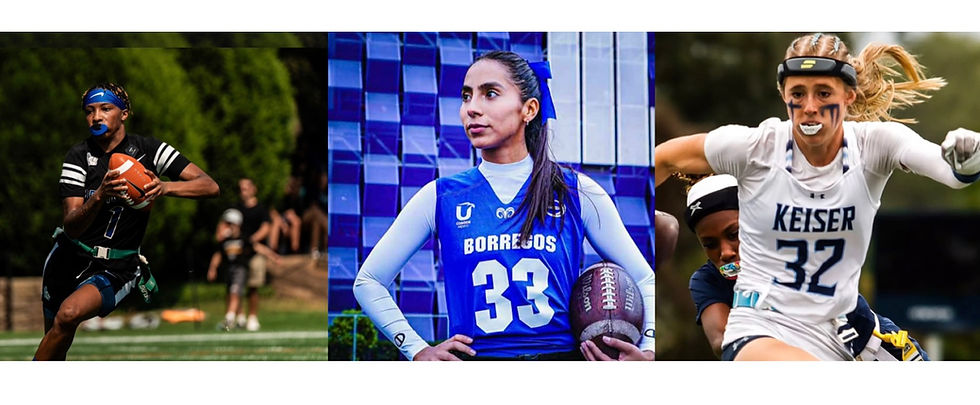New Name Who This? Mid Major Conference Making a Name For Themselves
- Chris D'Avanzo
- Jul 26
- 3 min read

Staying competitive in an ever-changing world of collegiate athletics is about having an identity, strategy, brand, and a willingness to adapt. That’s exactly what the American Athletic Conference is trying to do with its official rebrand to The American Conference, or simply The American. The league is also shedding the “AAC” nickname, which was often confused with the Power Five’s ACC (Atlantic Coast Conference). Now the conference can move forward with a simpler, bolder identity. A rebrand is necessary to attract top-tier recruits and sponsors to a conference people most likely never heard of.
There’s no real rebrand without trademark filings. A trademark is legal protection for a name, logo, slogan, or other brand elements that distinguish an organization from another. In the sports world, trademark filings and registrations become a valuable asset through licensing agreements. A license agreement is a formal agreement giving a person or organization permission to legally use the trademark filings/registration to third parties for the creation and sale of merchandise.
To go along with their rebrand, The American recently filed federal trademark applications for their new business division, “AMERICAN RISE VENTURES,” and the design of their newly introduced mascot named Soar the Eagle. The conference has held a federal trademark registration for “THE AMERICAN” since 2015 nearly a decade before the name change was officially announced.
These trademark filings/registrations are key assets for the conference which can be used for licensing agreements. To streamline and scale this process, the conference launched American RISE Ventures. The new business division is responsible for the league’s commercial growth. This is done through sponsorships, media rights, tech innovation, and long-term strategic partnerships. In simple terms, American RISE Venture will oversee the licensing of the conference’s intellectual property to apparel companies, content distributors, corporate sponsors, and any other entities that will generate revenue for the conference. For a mid-major conference without massive media rights, turning intellectual property into a monetized brand is a smart and necessary way to grow financially.
Under the proposed House v. NCAA settlement, Division I schools will be permitted, though not required, to share up to 22% of their average annual athletic revenue with student-athletes, with a projected cap of $20.5 million per school. A school’s financial situation is everything in the new era of college sports. Compensating athletes is no longer optional, it’s essential to stay competitive.
Knowing how important money is to be nationally competitive, The American Commissioner Tim Pernetti announced that all schools except for Army and Navy (players cannot receive compensation at these schools) must commit to distributing at least $10 million to athletes over the next three seasons. He became the first commissioner to set such a standard. This announcement was pivotal because The American has taken some big hits in recent years, losing Cincinnati, UCF, and SMU to larger conferences. The conference has responded aggressively by adding seven new programs, such as Charlotte, FAU, North Texas, Rice, UAB, UTSA, and Army (football-only). With 15 teams now in the fold, the conference is betting on fresh markets, strong leadership, and a brand that speaks to both tradition and innovation.
While The American is not stacked with perennial playoff contenders, Army and Tulane still flirted with the College Football Playoff race last season. Maybe extra money going to schools within the conference can attract the athletes required to be in serious contention. The gap to the College Football Playoff may seem like a pipedream, but The American Conference is positioning itself as an innovative, forward-thinking conference where the rest of the country will have no choice but to take notice. Soon that pipe dream might become reality.







MM88 MM88
Go88 Go88
kuwin kuwin
MM88 MM88
iwin iwin
J88 J88
MM88 MM88
Go88 Go88
kuwin kuwin
MM88 MM88
iwin iwin
J88 J88
MM88 MM88
Go88 Go88
kuwin kuwin
MM88 MM88
iwin iwin
J88 J88
MM88 MM88
Go88 Go88
kuwin kuwin
MM88 MM88
iwin iwin
J88 J88
MM88 MM88
Go88 Go88
kuwin kuwin
MM88 MM88
iwin iwin
J88 J88